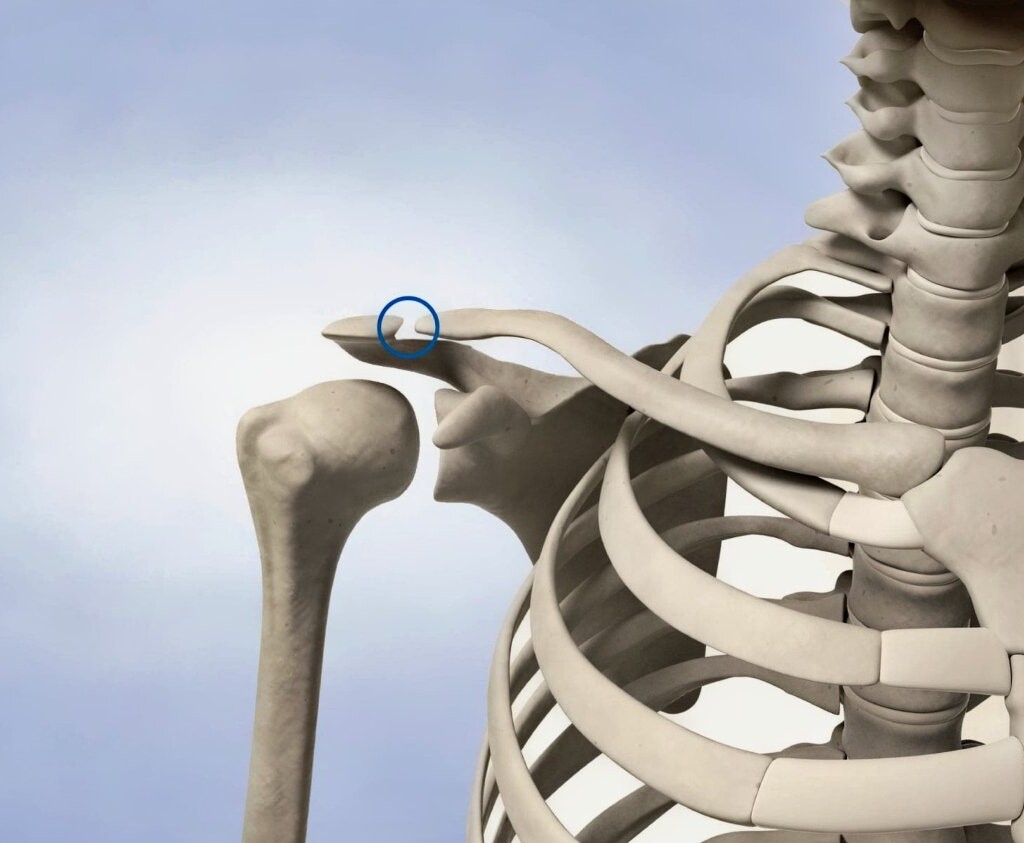The clavicle is a seemingly small bone, yet it plays a significant role in the movement and stability of the human body. However, beyond its anatomical functions, many researchers and holistic therapists highlight that this bone structure can become the stage for deep emotional tensions.
What is the Clavicle in Biodecoding?
Discover the summary in an interactive podcast format – are you ready to tune in?
Authority and Pain: Emotional Keys in the Clavicle
Biodecoding, a therapeutic approach that seeks to decipher the emotional language behind illnesses, assigns the clavicle a symbolic role of strength and support.
While traditional medicine studies injuries such as fractures or sprains in isolation, this discipline delves into the subjective factors that could trigger them. It also claims that the clavicle symbolizes the belief in one’s ability to overcome obstacles, reminding us of the importance of having personal and paternal support, whether real or internalized.
When a person doubts their ability to achieve their goals, the clavicle may be affected: “sharp and unexpected pain” could be a wake-up call to revisit underlying beliefs and fears. Similarly, situations of separation or conflicts with a father figure (or another authority figure) emerge as triggers for tensions in this bone.
Emotional Conflicts and Their Physical Impact
The sternoclavicular joint is linked to the ‘idea of achievement’: the internal struggle to materialize projects or life goals. On the other hand, the acromioclavicular joint addresses the “notion of separation”: the fear of being left without support or a circle of emotional security.
Early experiences of lack of support can strongly impact self-perception in adulthood. Consequently, in the realm of Biodecoding, the advisor invites the individual to identify what current situations are reactivating old wounds related to the absence of emotional support. This becomes particularly relevant when a person perceives pain or experiences blockages in the clavicle without any clear medical cause.
Authority, Self-Criticism, and Separation
Challenges involving the clavicle are often associated with how we accept—or reject—orders from others.
At times, we feel tension when obeying instructions that do not align with our values or when trying to assert our will while feeling disrespected. Thus, this friction translates into an internal conflict that may result in physical discomfort.
However, self-criticism is another decisive factor.
People with a tendency to feel guilty for their desire for independence or for harboring “rebellious” thoughts end up creating a vicious cycle: they are unable to express their authentic voice for fear of rejection or punishment. This pattern, rooted in childhood, perpetuates emotional dependency and submission to others’ will.
Strategies for Emotional Release from Clavicle Pain
The first step is to validate the need for independence and recognize the inalienable right to have an opinion. Another key tactic involves questioning limiting beliefs and seeking alternatives that reconnect with inner security.
Additionally, incorporating breathing techniques or mindfulness can be highly effective in relieving tension in the clavicle area. Regular practice of mindfulness can foster stress relief and facilitate the mind-body connection. Moreover, psychological support or cognitive-behavioral therapy provides tools to reframe automatic thoughts and combat excessive self-criticism.
The Path to Self-Affirmation
Focusing on self-responsibility is essential to break free from patterns of submission formed in childhood. Similarly, internal work should include reconciliation with authority figures, both externally (bosses, parents, teachers) and internally (the inner critic that suppresses one’s initiatives).
Consequently, each person must recognize their personal worth and their capacity to make genuine decisions.
“I can handle anything” transforms into a motivational mantra, while also balancing the acceptance of the growth process inherent in each challenge. The goal is not to escape the influence of others but to learn to manage autonomy without allowing guilt or fear to interfere with physical and emotional health.
Ultimately, the clavicle can be interpreted as an invitation to reassess self-confidence and the way we deal with authority and separation.
Biodecoding suggests that every emotional block arises to reveal a deficiency or a facet of the personality that requires attention. Therefore, addressing the message from the clavicle transcends mere physiological injury: it invites a deeper exploration of inner strength, the recognition of the need for support, and the assumption of responsibility for our own life projects.
Master Ruada — Alternative Medicine – Biodecoding
Transform your emotional and spiritual life with a personalized tool
Discover the power of Biodecoding combined with Kabbalah. Through your Personal Kabbalistic Tree, designed based on your name and date of birth, you’ll receive a practical guide to work on your emotions and achieve holistic well-being.





